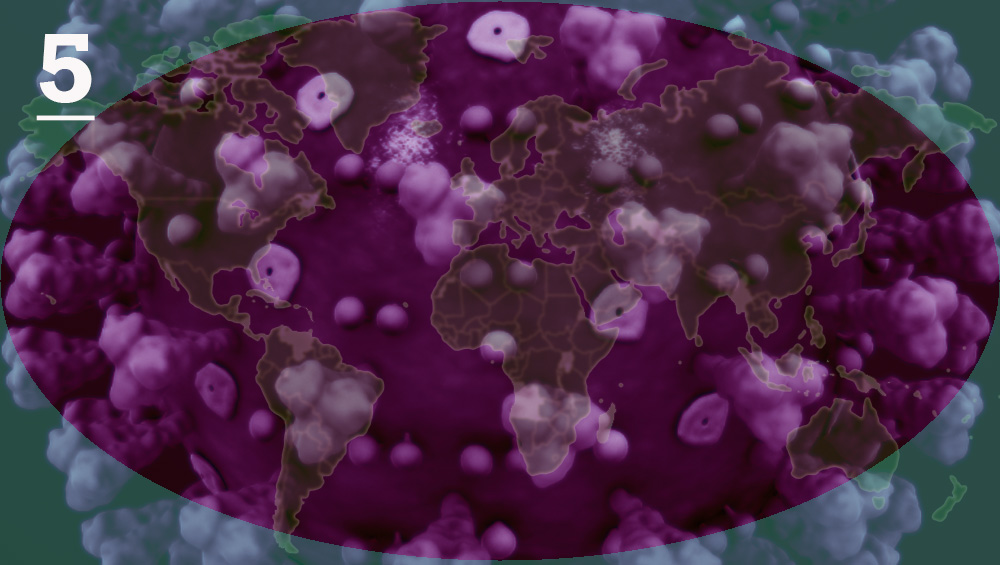
• Part 1: The effect of cancellations of exhibitions and fairs
• Part 2: Self-isolation, moving online and financial implications
• Part 3: Building communities and finding inner resilience
• Part 4: The artistic responses to the coronavirus and the prescient zeitgeist
by ANNA McNAY
What will be the lasting impact of the coronavirus on the arts and artists? It is hard to predict anything right now, when no one knows how long various countries will be in lockdown, and what travel restrictions will remain in place afterwards. Certainly, there seem set to be some long-lasting changes to the ways that many things are done. Sarah Strang, an artist and the director of Civic Room in Glasgow, speaks of flexibility being key – for artists and funders. There may well be clashes as shows are rescheduled, artists who were booked to be present may no longer be available (or able to fund their presence): “I don’t think the freelance workforce will come out well from this,” she says. “It needs a political, top-down decision to support this workforce.” In addition, she says: “Any artist, gallery, or arts organisation is continually fundraising, so it’s hugely precarious. This will have a huge impact. Many galleries will close permanently. If a commercial gallery can take the hit knowing it will have a good Frieze, it might be OK, but Frieze is only a breath away. The art world runs on two things: the ability to travel rapidly and internationally and the hand-to-mouth nature of earnings and artists being able to work. As we saw with the 2007 financial crisis, people don’t rally afterwards, we don’t bounce back, we still haven’t. And this is financial and physical, nobody is resilient, and it’s a world collapse, not just one country that can be bailed out.”
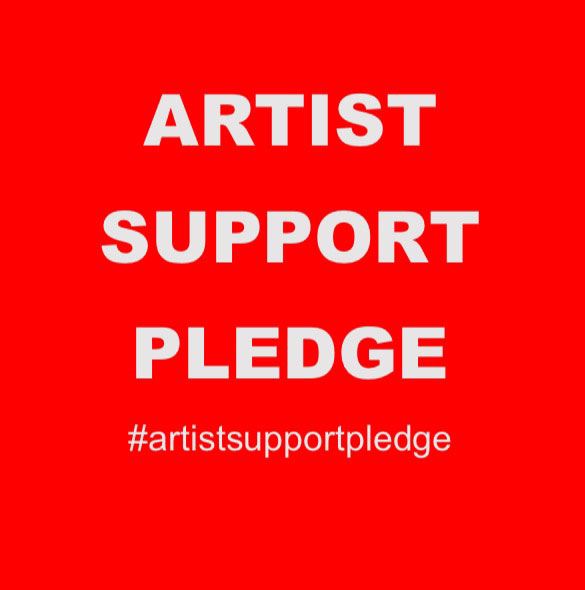
The image of the #artistsupportpledge post. © Matthew Burrows.
Other artists, however, are more positive, and a huge amount of rallying has been witnessed already. One great example is the #ArtistSupportPledge, launched on Instagram by Matthew Burrows (b1971, the Wirral). Having run peer mentoring with ABC Projects for the past 12 years, Burrows strongly believes that “generosity is the context for creativity”. Because of the crisis, he had to cancel the next few months’ sessions, and so he wondered what else he could do to respond to the desperation in his artistic community.
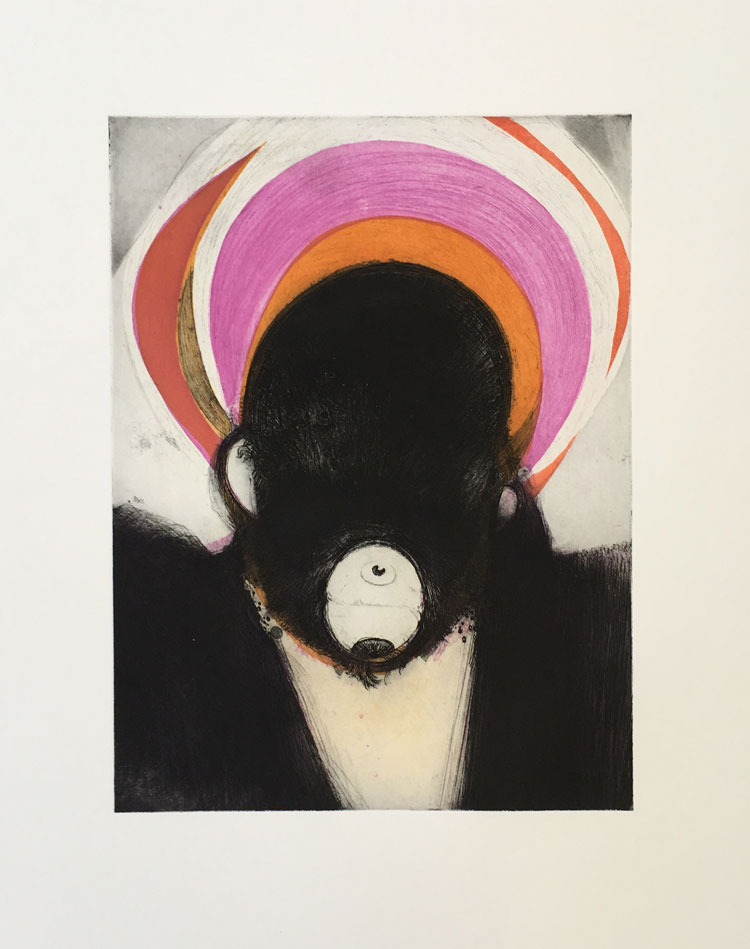
Matthew Burrows, The Seer, 2012. Etching on paper, 57 x 45 cm. © the artist.
The answer was a simple but effective idea: to offer works for sale for £200 or less, and, on selling £1,000’s worth, to pledge to spend £200 on buying a work from someone else. The initiative was put out on Instagram, using the hashtag, and by the end of the first day, Burrows had already sold enough works to fulfil his first pledge. In the ensuing days, the idea went viral, and artists the world over are now participating. The scheme generated $10m in less than a week. Burrows has also received donations from big-name artists, enabling him to give out £200 “gifts” to artists using the hashtag, bringing them nearer to their £1,000 pledge total, and also offering them wider exposure. Burrows, who is represented by Vigo Gallery, would not normally sell his works for such low prices, and was worried that, in doing so, he might undersell himself and reduce his worth, but he decided that, to help others, he must feel some pain, and that these are, after all “extraordinary times”.
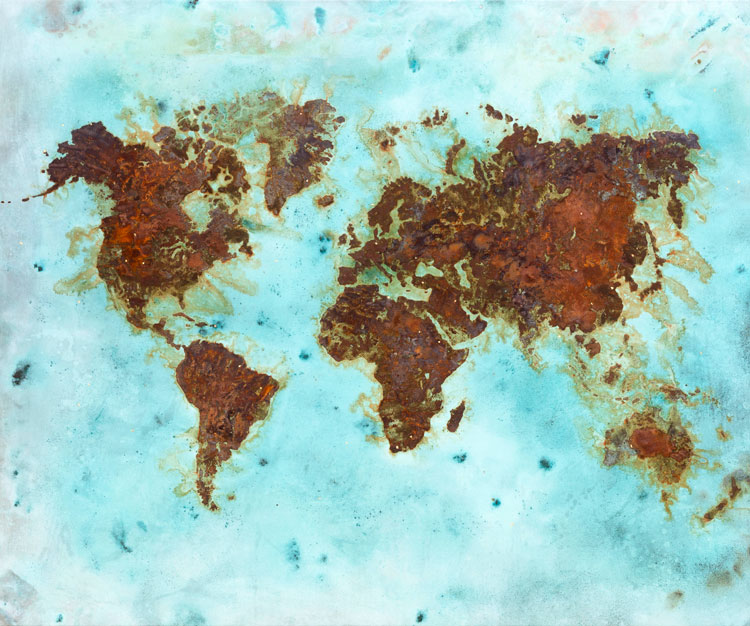
John Keane, Flat Earth Series 7, 2019. Reactive metal paint, gold, diamonds on linen. © John Keane, Courtesy of Flowers Gallery.
With galleries being forced to close, many are thinking outside the box and taking their exhibitions online or creating virtual tours. John Keane (b1954, Hertfordshire, UK) was all set for the private view of his exhibition Flat Earth, at Flowers, London, when, on the morning of the event, the gallery decided to close until further notice. He describes his show as being “in a state of cryogenic suspension”, ready to go, should things change. He says this is a major blow and he has nothing else lined up, as he was waiting to see who he would meet, and what opportunities would arise through this. However, what has been organised for the gallery’s newly vamped website is an improved facility for viewing the work online, with a voiceover by Keane. Nevertheless, Keane says: “This is not the same thing, as I don’t work with digital media, and a painting is an object you have to share a space with to get to know.”
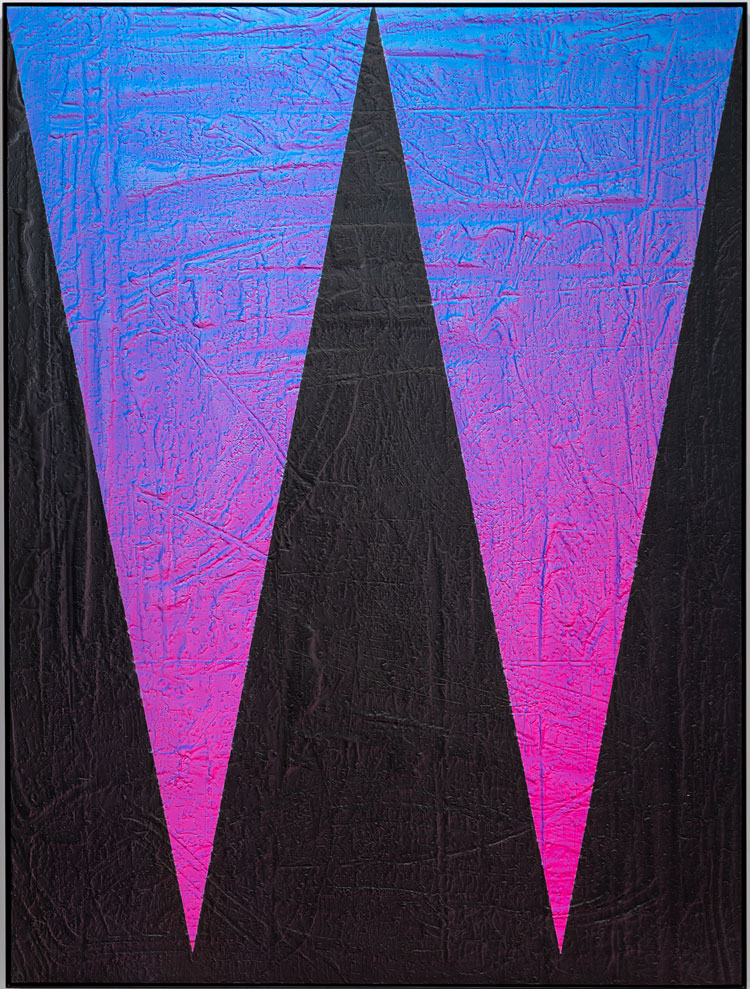
Michael Staniak, Natural Order, 2020. © the artist.
Unit London has similarly moved its current exhibition, Natural Order by Michael Staniak, online. Staniak’s focus is on experimental, digital media-inspired paintings exploring process, materiality and abstraction in a digital era – constantly in dialogue with themes relating to the internet and the culture of the web. His process-oriented painting oscillates between flat digital imagery and textured analogue painting, so, while a relevant theme for an online exhibition, the point he is trying to make is perhaps being lost. Sadly, this is the case for much art – it is never the full experience when reduced to a small, pixelated 2D screen.
Federica Beretta and Gilles Dyan from Opera Gallery say: “Since the outbreak of Covid-19, most galleries have been forced to temporarily close, so they have turned to digital platforms to provide as similar an experience as they can for their clientele. Many small and medium-sized galleries use Artsy and Artnet as they can’t run their own digital marketplace, and many gallery owners have turned to alternative online platforms and their success will need to be assessed in the future. It is an opportunity for gallerists to review and rebuild their communication and sales strategies for the digital era with enhanced creative thinking. In the long term, it will probably help artists to reach a wider audience with more effective use of platforms. Moreover, Opera Gallery makes strong use of our existing digital platforms (Facebook, Instagram, WeChat and Weibo) to promote artists and exhibitions to our followers. Digital exhibitions and online catalogues are all easy to access as normal. Our online viewing room will be available soon. We also care about artists’ health during this challenging period. We maintain frequent communication with artists via our local gallery networks to understand how we can help with any needs.”
As the UK-based artist Fabienne Jenny Jacquet (b1970s, Ajaccio, Corsica) notes, this crisis has pushed things further down a path artists and galleries were already taking: “The internet provides a way to keep in touch with other artists and with collectors at the moment. I can see that some galleries are choosing to host virtual exhibitions and are finding ways to keep art lovers interested and interacting with them, so maybe this will have a lasting impact on how we view and purchase art in the future.”
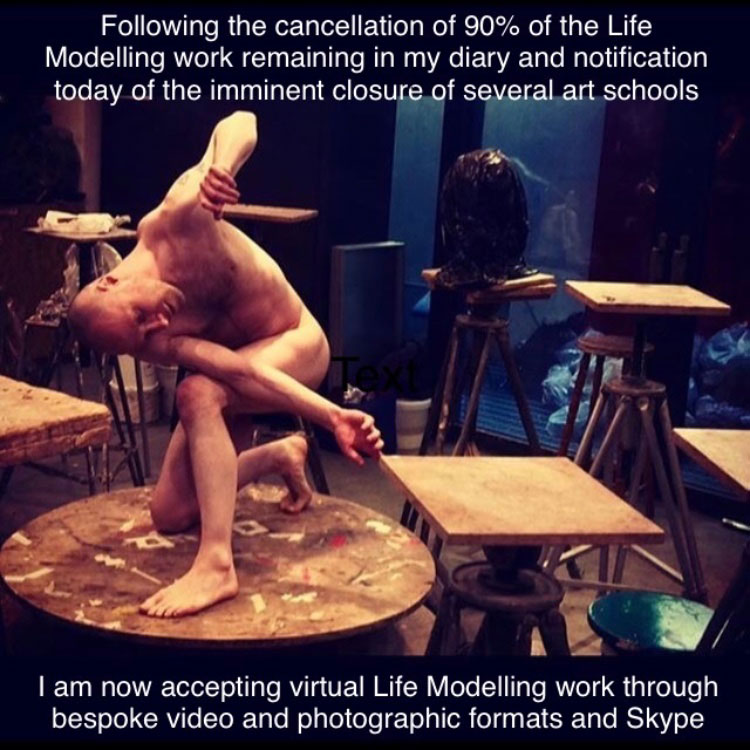
Dominic Blake. Post on Instagram.
Even life drawing is going online. Life model Dominic Blake was quick to respond to the impending crisis and lockdown, posting on Instagram: “Following the cancellation this morning of 90% of the remaining life modelling and performance art work in my diary and notification of the imminent closure of two art schools, I am now accepting virtual life modelling work … I have long felt that drawing from life is infinitely superior to the use of two-dimensional video or photographic media, however also believe them to be artistically valid and pragmatic temporary solutions while we navigate through this unfolding new reality. I would be pleased to create bespoke photographs or videos on request, or work via Skype.”

#SempleLifeClassLive © Instagram / Stuart Semple.
Stuart Semple (b1980, Bournemouth, UK) had a similar idea when he opened his studio, hired a life model and streamed a free, online life-drawing class via Facebook. More than 3,000 artists from around the world took part, including whole art schools. His model, Debbie, was handed a face mask, and participants made sketches responding to the current situation, going on to share their work with one another and the wider community via Instagram, using the hashtag #SempleLifeClassLive.
What seems certain is that art thrives in difficult times. So even though it won’t be easy – primarily on a financial level – those artists and galleries who are prepared to think a little outside the box will surely come out on the other side.